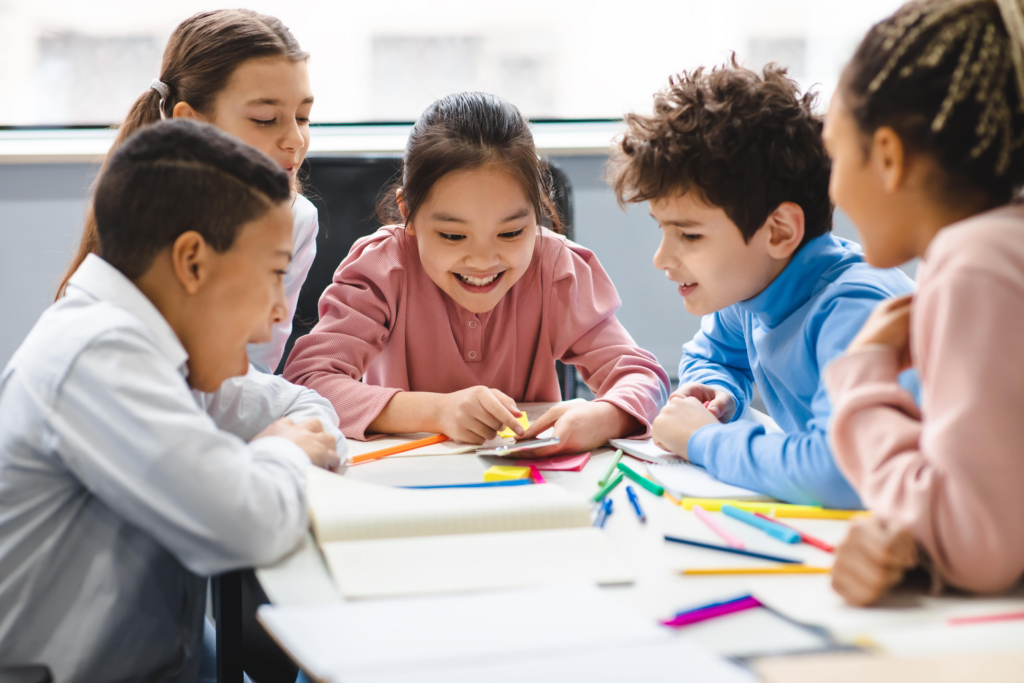INCLUSIVE EDUCATION: STRATEGIES FOR SUPPORTING STUDENTS WITH DISABILITIES
September 25, 2024“Education is the passport to the future, and assistive technology is the key that unlocks the door for every student.” – John Smith.

The goal of inclusive education is to guarantee that all children, irrespective of their skills or impairments, can receive a high-quality education in regular classroom settings. Through the promotion of diversity, empathy, and teamwork, this model not only helps students with disabilities but also enhances the educational experience for all students.
In light of the growing societal acceptance and comprehension of human diversity, inclusive education is becoming more and more crucial. This article explores the fundamentals of inclusive education and provides helpful advice on how to assist students with impairments. We’ll look at many topics, such as the law, teaching techniques, teacher collaboration, and the part that communities and families play in fostering an inclusive atmosphere.
Understanding Inclusive Education
A system that accepts all students—including those with disabilities in general education settings is known as inclusive education.

Legal Structure
Globally, inclusive education is supported by a number of laws and regulations. Students with disabilities must have a free appropriate public education in the least restrictive setting, according to the Individuals with Disabilities Education Act (IDEA) of the United States. Similar to this, inclusive education is emphasized as a fundamental human right in the United Nations Convention on the Rights of Persons with Disability.

Obstacles to Educating Everyone
The following obstacles prevent inclusive education from being implemented, despite its obvious benefits:
– Attitude Barriers: Biases and misconceptions regarding disability might cause peers and educators to have unfavorable opinions.
– Lack of Training: A lot of educators are not properly trained to assist students with impairments.
– Inadequate Funding and Resources: Schools might not have the money or supplies necessary to fully adopt inclusive policies.
Strategies for Supporting Students with Disabilities

Using strategies like flexible grouping to match instruction to students’ interests and abilities, diverse assessments that provide multiple ways for students to demonstrate understanding through written assignments, projects, and presentations, and content modification to ensure every student can engage with the material at their own level are all part of differentiated instruction. Lesson plans and resources are modified to meet the individual needs of each student.
The phrase “assistive technology” refers to tools and frameworks that improve the way students with disabilities can access the curriculum. Examples of these tools and frameworks include text-to-speech software, which converts written text into spoken language, speech recognition software, which enables students to transcribe their thoughts, and graphic organizers, which arrange ideas and concepts visually.

In collaborative education, general education and special education teachers collaborate by managing and evaluating students’ learning together as a team through co-teaching, and by offering solutions and advice to the general education teacher in consultative teaching, which helps the teacher accommodate students with disabilities.
Social-emotional learning – which incorporates techniques like relationship-building through team-building exercises to foster constructive relationships, teaching empathy through lessons on tolerance for diversity, and providing support via mentorship or counseling services for adolescents facing emotional or social difficulties – is crucial to creating an inclusive classroom where all children feel respected and understood.
To effectively support students with impairments, it is necessary to involve families in decision-making and provide them with updates on their child’s development. Additionally, workshops and resources that offer advocacy and tips for home learning must be provided, and families must be involved in collaborative goal-setting to ensure that their goals are in line with their children’s educational objectives.

Educators should visit each other’s classrooms to share successful strategies, participate in ongoing professional development through workshops on behavior management, assistive technology, and inclusive teaching methods, and practice reflective teaching to identify areas for improvement in order to stay up to date on best practices in inclusive education.
The physical arrangement of the classroom must take mobility needs and social interaction into account. Positive reinforcement must be used to recognize and celebrate each student’s accomplishments and to build self-esteem. Finally, the curriculum must incorporate materials and perspectives from a variety of backgrounds in order to represent the backgrounds of all students.

By creating a clear vision that is in line with school objectives, providing funding for training and materials, and cultivating a collaborative culture that promotes cooperation among teachers, specialists, and families to support students, effective school leadership plays a critical role in advancing inclusive education.
Inclusive education is not only required by law, but it is also a moral requirement that benefits every member of the school community. Teachers can create a supportive environment where every student has the chance to thrive by putting into practice effective strategies like differentiated instruction, UDL, assistive technology, collaborative teaching models, social-emotional learning, family engagement, professional development, and creating an inclusive environment.
Dilnoza Qodirova
4th Year Student, International Journalism Faculty
Uzbekistan State World Languages University, UZSWLU


No Comments so far
Jump into a conversationNo Comments Yet!
You can be the one to start a conversation.